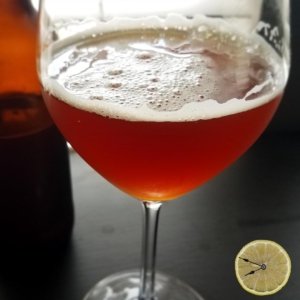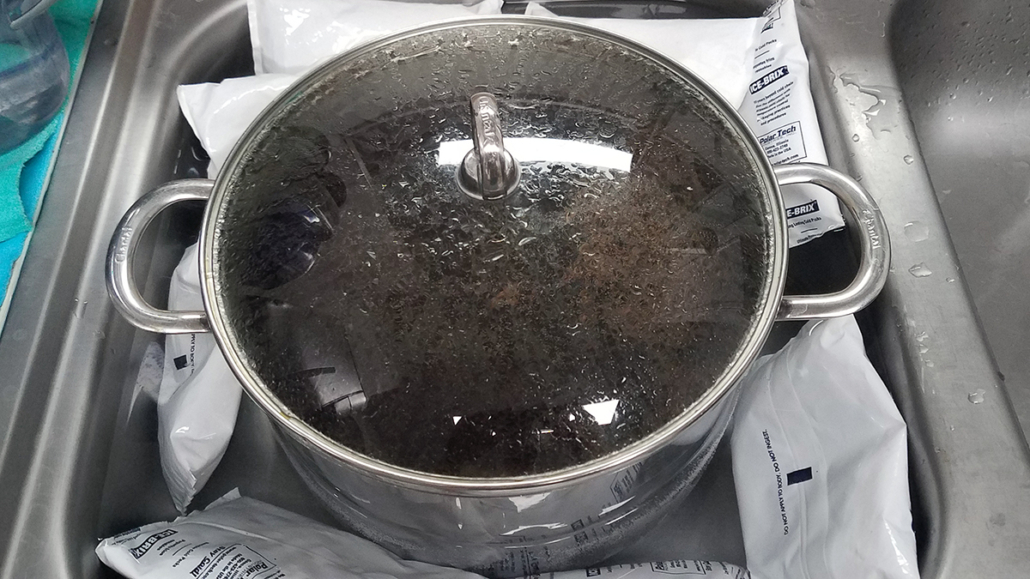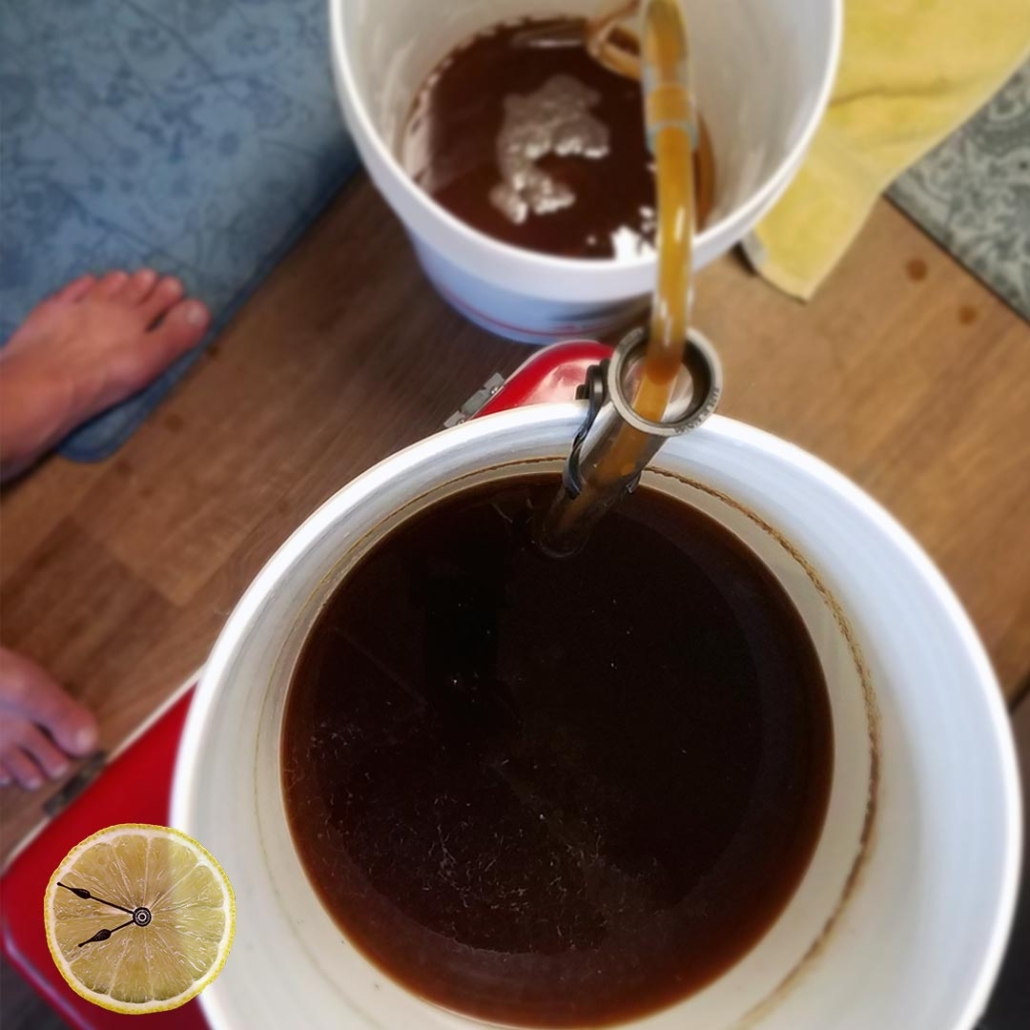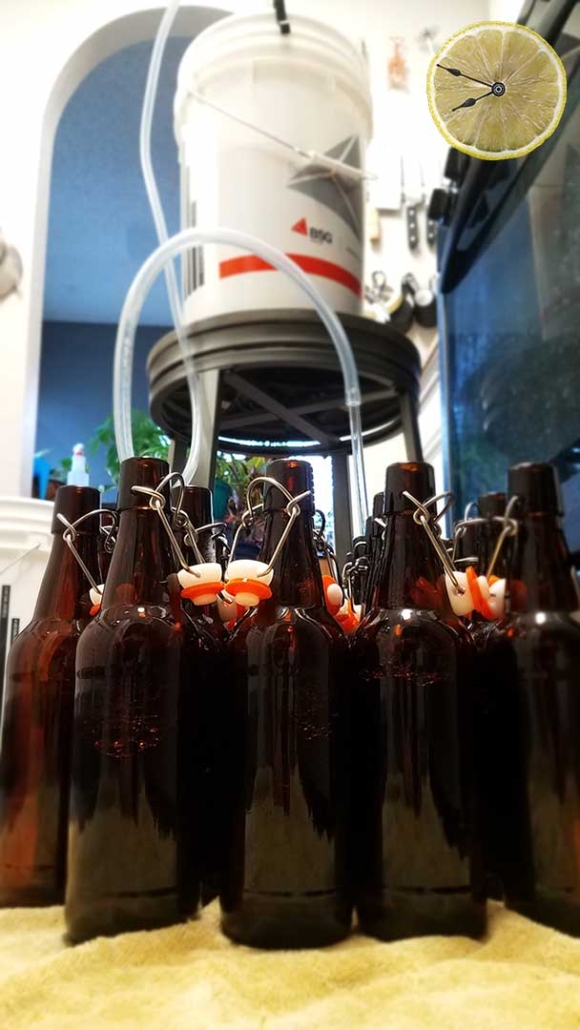Heather Ale: A Galloway Legend
From the bonny bells of heather
They brewed a drink long-syne,
Was sweeter far than honey,
Was stronger far than wine.
They brewed it and they drank it,
And lay in a blessed swound
For days and days together
In their dwellings underground.There rose a king in Scotland,
A fell man to his foes,
He smote the Picts in battle,
He hunted them like roes.
Over miles of the red mountain
He hunted as they fled,
And strewed the dwarfish bodies
Of the dying and the dead.Summer came in the country,
Red was the heather bell;
But the manner of the brewing
Was none alive to tell.
In graves that were like children’s
On many a mountain head,
The Brewsters of the Heather
Lay numbered with the dead.The king in the red moorland
Rode on a summer’s day;
And the bees hummed, and the curlews
Cried beside the way.
The king rode, and was angry,
Black was his brow and pale,
To rule in a land of heather
And lack the Heather Ale.It fortuned that his vassals,
Riding free on the heath,
Came on a stone that was fallen
And vermin hid beneath.
Rudely plucked from their hiding,
Never a word they spoke:
A son and his aged father—
Last of the dwarfish folk.The king sat high on his charger,
He looked on the little men;
And the dwarfish and swarthy couple
Looked at the king again.
Down by the shore he had them;
And there on the giddy brink—
“I will give you life, ye vermin,
For the secret of the drink.”There stood the son and father
And they looked high and low;
The heather was red around them,
The sea rumbled below.
And up and spoke the father,
Shrill was his voice to hear:
“I have a word in private,
A word for the royal ear.“Life is dear to the aged,
And honour a little thing;
I would gladly sell the secret,”
Quoth the Pict to the King.
His voice was small as a sparrow’s,
And shrill and wonderful clear:
“I would gladly sell my secret,
Only my son I fear.“For life is a little matter,
And death is nought to the young;
And I dare not sell my honour
Under the eye of my son.
Take him, O king, and bind him,
And cast him far in the deep;
And it’s I will tell the secret
That I have sworn to keep.”They took the son and bound him,
Neck and heels in a thong,
And a lad took him and swung him,
And flung him far and strong,
And the sea swallowed his body,
Like that of a child of ten;—
And there on the cliff stood the father,
Last of the dwarfish men.“True was the word I told you:
Robert Louis Stevenson
Only my son I feared;
For I doubt the sapling courage
That goes without the beard.
But now in vain is the torture,
Fire shall never avail:
Here dies in my bosom
The secret of Heather Ale.”

Heather Ale
Equipment
- 5-gallon plastic fermenters or glass carboys
- 24" auto-siphon
- Star-San
- Graduated Cylinder
- Hydrometer
- Aquarium Pump + Airstone
Ingredients
- 3.3 lbs Briess Munich malt extract
- 3 lbs local honey
- 2 oz heather tops
- 1 oz Hallertau Mittelfrüh or other noble hops
- 2 oz local bee pollen
- 1 pkg Lallemand Kveik Voss ale yeast
Instructions
Primary Fermentation
- In your plastic fermenter or glass carboy, mix up about 5 gallons of Star-San, following the instructions. Sanitize all the necessary equipment before you begin.

- Boil 4 gallons of filtered, mountain spring, or freshly-drawn well water in a 5-gallon stainless steel stockpot. Add all the Munich Malt and stir well so the syrupy extract does not sink to the bottom where it might caramelize. Then add the heather tops and start a timer for 60 minutes. Stir often to prevent the wort from boiling over. Traditional brewers only stir beer wort the same direction as the sun.When 5-minutes remain on the clock, add the noble hops, if using. Stir well to release the terpenes' volatile aromas, then cover with a lid.

- Remove your boiled wort from the heat. Place the covered stockpot in a sink filled with ice water. You might have to add more ice to bring the temperature down to around 105F or 40C. Try not to raise the lid as it cools to prevent contamination.

- While the wort cools, follow the package instructions to rehydrate the Kveik ale yeast. If using a 'real' farmhouse ale yeast, follow the original brewer's instructions.

- Pour your cool wort into the primary fermenter through a sanitized mesh strainer. This is where our ancestors used fresh flowering heather tops as a rather ingenious mesh, adding extra floral flavor. Add 1 oz. of bee pollen and reserve the remaining 1 oz. for secondary. Add the honey, stirring for several minutes until fully incorporated. Boiling evaporated all the dissolved gasses in the wort, so yeasts can't get established unless you shake, whisk, or bubble air back into it. I use a sanitized aquarium stone and air pump for 10-15 minutes. This step also ensures that my honey mixes completely. Tradition has it that you can just pour the wort above hip level from the boiler to the fermenter and that splashing is enough to reincorporate oxygen, but I want my Kveik to be overachievers. Note: It is better to oxygenate in your fermenter after straining and adding the honey – I just got a better photo over in the sink while the wort cooled. However you add oxygen does the job.

- Before pitching the yeast, taste your wort! How do you like it? Make notes and store the memory away for comparison with the fermented product.It's tradition to pitch the Kveik ale yeast while screaming like a barbarian into the fermenter. Personally, I find The Yeast Scream to be very fulfilling. Neighbors be damned.Take a hydrometer reading, then seal with an airlock.At this stage, if you want to increase the Original Gravity you could add more honey. I am aiming for a dry, easy-drinking ale around 5-6% ABV so O.G. 1.048 works for me.

Racking & Secondary
- When the hydrometer reading is stable for 2-days and the attenuation is around 85% your braggot is probably done fermenting. Kveik farmhouse ale yeasts, depending on the heat, can ferment braggots in a few days or a week. It is much faster than you'd expect with the traditional wine, bread, and beer yeasts that most meadmakers are familiar with. Kveik may also contain bacteria that will not become established if you rack them as soon as they go dry. So take a reading often after about 5 days and rack as soon as fermentation stops, unless brewing with bugs is your thing (power to ya!).Racking means taking the fermented mead, beer, or wine off the thick cake of ale yeast that settles (floculates) to the bottom during fermentation. It is done with a sanitized siphon into a second fermenter to prevent oxygen that would allow acetic acid bacteria to grow. Don't splash or yell at this point in the journey. Introducing oxygen will start to turn your hard-won alcohol into vinegar (acetic acid). Not necessarily a bad thing, unless you want to drink it!Carefully stir the reserved 1 oz. of local bee pollen into the secondary fermenter. This will help finish attenuation by injecting nutrients into any stalled yeasts. More importantly, adding bee pollen during secondary bestows floral scents, sunshine color, and a nectar-like mouthfeel that is muted by primary fermentation.

Carbonation & Bottling
- Wait 1-3 days until the secondary fermentaion and degassing is complete. Rack again to remove any sediment. Measure an appropriate amount of priming sugar using one of the many calculators found on Google. I just use regular sugar since honey is never predicatable and usually aim for 2.8 atmospheres of carbonation. More carbonation seems to enhance the sweet flavors that are lacking in dry mead. But too many bubbles will dislodge the yeast at the bottom of each bottle, clouding the ale. That said, Kveik is pretty frickin' sticky. Fill the (sanitized) bottles using an autosiphon with the bottling wand attachment. I still use these 0.5 L swing-top bottles that are hard to find and will probably switch to bottles with caps soon. Cap following manufacturer's instructions. Let carbonate for at least 4 days at room temperature and then taste regularly until you are happy with the flavors. Next time, you'll know your preferences and make an even better Heather Ale. Bully for you! We have resurrected the legendary Heather Ale so many Picts allegedly died to safeguard from exactly this kind of exploitation. Drink up and go lay in a blessed swound.





Leave a Reply
Want to join the discussion?Feel free to contribute!